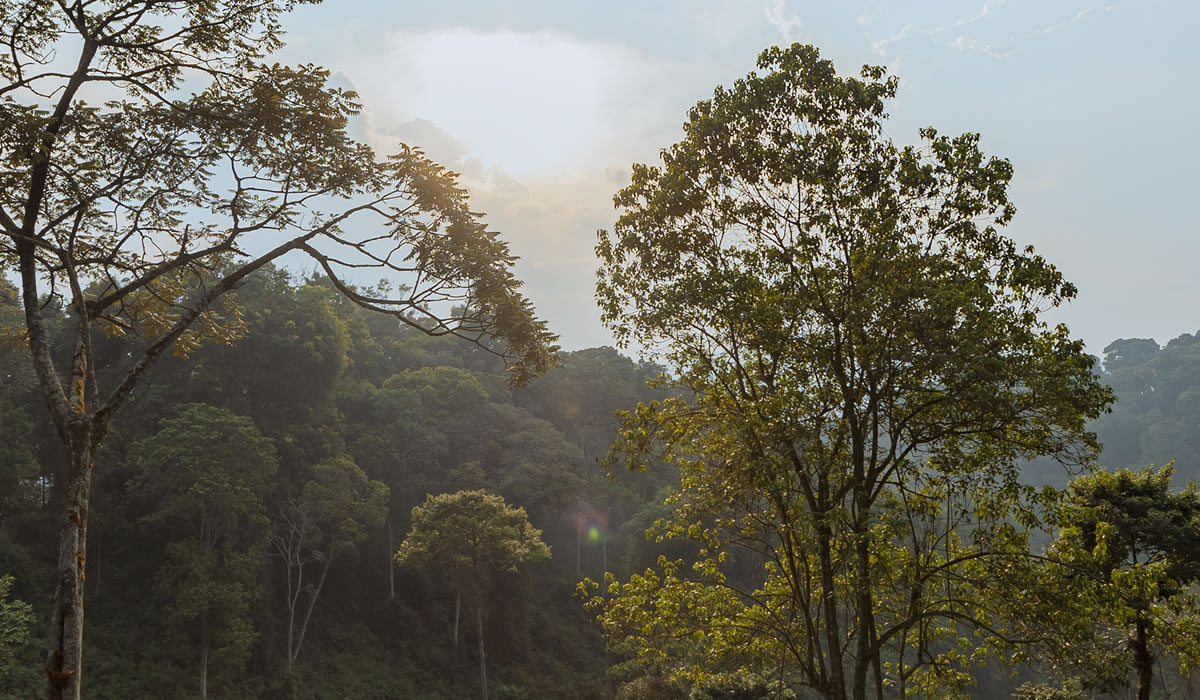Located in the lush, rolling hills of western Rwanda, Gishwati-Mukura National Park stands as a testament to the country’s remarkable journey from ecological degradation to environmental restoration. Once a vast forest expanse covering over 250,000 acres, Gishwati was reduced to a mere 1,500 acres by 2001 due to deforestation and land encroachment. However, through concerted conservation efforts led by the Forest of Hope Association (FHA) and supported by the Rwandan government, the forest has been rehabilitated and, in 2015, designated as Rwanda’s fourth national park. Today, Gishwati-Mukura is a beacon of biodiversity and sustainable tourism, offering visitors a unique blend of natural beauty and cultural heritage.

Things to See in Gishwati-Mukura National Park
Gishwati-Mukura is a haven for nature enthusiasts, boasting a rich tapestry of flora and fauna. The park is home to over 60 tree species, including indigenous hardwoods and bamboo, which provide shelter to a diverse range of wildlife. Among the primates, the park hosts a community of over 35 chimpanzees, making it one of the few places in Rwanda where visitors can engage in chimpanzee trekking . Additionally, golden monkeys, L’Hoest’s monkeys, and blue monkeys inhabit the forest, offering ample opportunities for primate watching.
Birdwatchers will find Gishwati-Mukura particularly rewarding, with over 200 bird species recorded in the park. Notable species include the Ruwenzori turaco, Grey Crowned Crane, Strange Weaver, and Regal Sunbird, many of which are endemic to the Albertine Rift . The park’s diverse ecosystems, from bamboo forests and hardwood trees to wetlands and grasslands create a rich mosaic of habitats that support this vibrant avian community.
The park’s landscape is equally captivating, featuring mist-covered hills, cascading waterfalls, and serene rivers. One of the most enchanting spots is the Matyazo Hill, which offers panoramic views of the surrounding forest and is accessible via a moderately challenging hike. For those seeking tranquility, the waterfall trail leads to a picturesque cascade, providing a perfect setting for reflection and relaxation.
Activities in Gishwati-Mukura National Park
Visitors to Gishwati-Mukura can engage in a variety of activities that highlight the park’s natural and cultural wealth.
- Chimpanzee Trekking: Embarking on a guided trek to observe the park’s chimpanzee community is a highlight for many. The experience offers a rare opportunity to witness these intelligent primates in their natural habitat, learning about their behaviors and conservation efforts.
- Primate Watching: Beyond chimpanzees, the park is home to several other primate species. Guided walks through the forest provide chances to spot golden monkeys, L’Hoest’s monkeys, and blue monkeys, each displaying unique behaviors and social structures.
- Birdwatching: With its rich avian diversity, the park is a paradise for bird enthusiasts. Guided birding tours allow visitors to observe and identify various species, including the elusive Albertine Rift endemics.
- Nature Walks and Hiking: The park offers several trails of varying difficulty, such as the Congo Nile Trail, which meanders through the forest and connects to rural villages, providing insights into local life and the park’s role in the broader ecosystem.
- Cultural Experiences: Engaging with local communities around the park offers visitors a deeper understanding of the region’s cultural heritage. Activities may include traditional music and dance performances, craft demonstrations, and visits to community projects that promote sustainable livelihoods.
Best Time to Visit
Gishwati-Mukura National Park is accessible year-round, but the best times to visit depend on the activities you’re interested in. The dry seasons, from June to September and December to February, are ideal for hiking and nature walks, as the trails are less slippery and more accessible. These months also offer clearer skies for panoramic views.
For birdwatching and primate activities, the wet seasons from March to May and October to November—are preferable. During this period, the forest is lush and vibrant, and wildlife is more active, making sightings more frequent. However, visitors should be prepared for occasional rain and muddy conditions.
How to Get There
Gishwati-Mukura National Park is conveniently located for travelers. From Kigali, the capital city of Rwanda, the park is approximately 85 kilometers away, translating to about a 2.5 to 3-hour drive. The most common route is via the RN4 road, passing through Musanze and Rubavu before reaching the park.
For those coming from Volcanoes National Park, the journey is shorter, taking about 1.5 to 2 hours. The park’s main entrance is located near the Pfunda Tea Factory, where the park office is situated with its distinctive blue roof, making it easily identifiable.
Alternatively, visitors can opt for chartered flights from Kigali International Airport to Gisenyi Airport, followed by a short drive to the park. This option offers scenic aerial views of Rwanda’s landscapes and is suitable for those with limited time.
While Gishwati-Mukura is still developing its tourism infrastructure, several accommodation options are available to suit different preferences and budgets.

